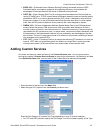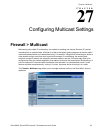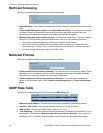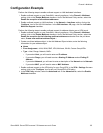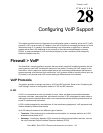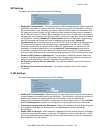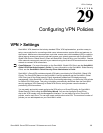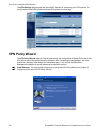SONICWALL SONICOS 2.5 ENHANCED ADMINISTRATOR’S GUIDE
153
Firewall > VoIP
C
HAPTER
28
Chapter 28: Configuring VoIP Support
This chapter provides overview information and configuration tasks on enabling Voice over IP (VoIP)
protocols. VoIP is a term used in IP telephony for a set of facilities for managing the delivery of voice
information using IP. In general, this means sending voice information in digital form in discrete
packets rather than in the traditional circuit protocols of the public switched telephone network
(PSTN). A major advantage of VoIP and Internet telephony is that it avoids the tolls charged by
traditional telephone service.
Firewall > VoIP
The SonicWALL security appliance supports the most widely used VoIP standard protocols and the
most commonly used VoIP vendors and systems on the market. Providing full VoIP support on the
SonicWALL security appliance enables organizations with increasingly decentralized workforces to
access corporate voice services from remote sites. VoIP systems consist of multiple clients (such as
IP phones or soft phones) and VoIP servers residing at different parts of the network.
VoIP Protocols
This section provides a concept overview on H.323 and SIP protocols. Refer to the “Configuring the
VoIP Settings” section for configuration tasks for H.323 and SIP networks.
H.323
H.323 is a comprehensive suite of protocols for voice, video, and data communications between
computers, terminals, network devices, and network services. H.323 is designed to enable users to
make point-to-point multimedia phone calls over connectionless packet-switching networks such as
private IP networks and the Internet.
H.323 is widely supported by manufacturers of video conferencing equipment, VoIP equipment and
Internet telephony software and devices.
An H.323 network consists of four different types of entities:
• Terminals - Client end points for multimedia communications. An example would be an H.323
enabled Internet phone or PC
• Gateways - Connectivity between H.323 networks and other communications services, such as
the circuit-switched Packet Switched Telephone Network (PSTN)



